
30 minute read
KITTEN SEASON
ROICE-HURST HUMANE SOCIETY
IT’S KITTEN SEASON
Advertisement
Words + Photos by Jenna Kretschman

With the warmer weather and longer days of springtime comes kitten season — the time between March and November when thousands of kittens are born on the streets, in bushes and under porches all over the Grand Valley. Roice-Hurst Humane Society and their network of foster families are gearing up for this year’s barrage of tiny felines.
This time of year, unsterilized community cats, which are stray or feral cats that live in outdoor colonies and have not been spayed or neutered, begin their breeding season. One female cat can have up to three litters of kittens per year, each with an average of five kittens per litter, and those kittens can begin reproducing when they reach about 4 months of age. At that rate, community cat populations can skyrocket without intervention.
According to the Humane Society of the United States, up to 80 percent of all kittens born each year are born outdoors to community cats. Kittens born outdoors face grim threats of disease, harsh conditions and orphaning. Sadly, they often don’t survive without the help of humans.
But, when it rains cats and kittens, dozens of local foster families are waiting to catch them. Kittens found outside are brought in droves to animal shelters, like Roice-Hurst Humane Society, and many are too young, sick or undersocialized to be placed up for adoption. These kittens are placed into the care of loving foster homes for a month or two until they become larger, healthier and friendlier, so they can find their forever families.
Sue Tuffin, a foster volunteer at RoiceHurst Humane Society, began fostering kittens many years ago when she discovered litters of orphaned newborn kittens while trapping and neutering community cats. Every few hours for the first several weeks of life, orphaned newborn kittens must be bottle-fed, stimulated to urinate and defecate, kept warm and clean and closely monitored. Since her first litter of foster kittens, Tuffin has opened her heart and home to 227 foster animals, specializing in bottle-fed kittens and special-needs cases.
“I knew there was a tremendous need for fostering abandoned animals, and I just felt that it was something that I could offer up and be able to help the little critters,” Tuffin says.
One of Tuffin’s most memorable foster kittens was Emmie, a blind kitten with a fluffy, dilute, tortoiseshell coat. In June of 2019, Emmie was found outdoors and brought into Roice-Hurst Humane Society at 4 weeks old with a scrawny frame, intestinal parasites and a gruesome upper respiratory infection that damaged her eyeballs beyond repair.
“I went to the shelter with my litter of other fosters for their shots, and, while I was there, the story came up of this little blind kitten. She was very tiny and fragile and stressed. I had just recently lost a blind cat who had been with me for 23 years, so I said, ‘I think I can help this little blind kitty gain some confidence and learn how to navigate in her world. Let me take her home.’ So, she came home with me,” Tuffin says.
After several months in foster care, Emmie flourished into a healthy, vivacious kitten with a massive personality and ear tufts to match. When her damaged eyes had to be surgically removed, the vet tech who assisted with the surgery fell in love with Emmie and decided to adopt her.
“She got a wonderful home. She was just an exceptionally sweet kitten and a beautiful cat,” says Tuffin.
Unfortunately, there are more kittens that require foster care than there are foster homes, and kitten season is an overwhelming strain for every shelter in the valley. In 2019, Roice-Hurst Humane Society placed 414 animals into foster homes, 354 of which were cats and kittens. Orphaned kittens are not the only animals that require foster care. Nursing or pregnant cats and their babies, under-socialized kittens, weaned kittens, older cats and even dogs and puppies are all cared for by foster volunteers. Foster volunteers range from retirees to working people to college students; a wide range of time commitments and fostering opportunities exist.
Roice-Hurst Humane Society provides foster volunteers with all the required supplies and veterinary care needed to save kittens, including food, litter, formula, blankets, bottles and more. Saving lives is at no cost to volunteers — all they need is a dedicated space at home (such as a spare bedroom or bathroom), some extra time and plenty of love to give to animals in need.
“You do know you make a difference, because a lot of these little guys absolutely would not have a chance at life. And who doesn’t love unconditional love? You become their mom. They know your voice; they look for you; they follow you. It’s a wonderful experience,” says Tuffin.
While fostering makes a tremendous difference in the lives of Mesa County’s tiniest felines, the best way to save kittens is to prevent community cat pregnancies in the first place. Roice-Hurst Humane Society launched the Grand Valley Cat Project in August 2019, which combats cat overpopulation by providing barrier-free access to spay/neuter surgeries and trap-neuterreturn (TNR) practices. The project focuses its efforts in the 81501 ZIP code for now but plans to expand to other ZIP codes in the future.
“We are trapping, neutering, vaccinating and ear-tipping community cats and then returning them to their outdoor homes, so they can no longer reproduce. With this project, we are also providing spay/neuter surgeries to owned cats in the 81501 area,” says Mila Revelle, outreach and field coordinator for the Grand Valley Cat Project.
Ear-tipping is a simple procedure to remove the tip of the cat’s left ear, performed under anesthesia during a spay or neuter surgery. This is how trappers identify whether or not a cat has already been through a TNR program.
“There is a huge need for this TNR program. Our kitten seasons are pretty brutal. The kittens take a lot of our foster home availability; they
take a lot of our supplies, a lot of the shelter staff’s time. It’s a really draining time of the year,” Revelle says.
In its first five months of operations in 2019, the project was able to sterilize 373 cats. Revelle encourages anyone who is feeding outdoor cats to make sure the cats are spayed or neutered, and, if they aren’t able to do that, then ask for help from a local TNR organization like the Cat Project or Grand Valley Pets Alive. :

Emmie, a blind kitten, was found outdoors as a sick 4-week-old and flourished in foster care with Sue Tuffin.
OUR FAVORITE INSTAGRAM PAGES

BRYN CHRISTINE @artbybrynchristine Bryn Loftness is a hobby artist, figure model and full-time student at Colorado Mesa University. As can be seen in her unique style, she is inspired by bold color combinations and abstract depiction of the female figure. She works primarily with acrylic paint but dabbles with many other media.
LULU CRÊPE @lulucrepe Follow the rise of a premier crepe stand in Colorado. This small business stays busy throughout the year and following this account is crucial to be in the know for when and where Lulu’s will be at next. See her story on page 28.
PALISADE COFFEE COMPANY @palisadecoffeecompany This coffee company shares high-quality coffee bean pictures and keeps us up to date on the latest sales and giveaways happening. They also announce when new coffee flavors go live. A must-follow for coffee enthusiasts near the Palisade area.
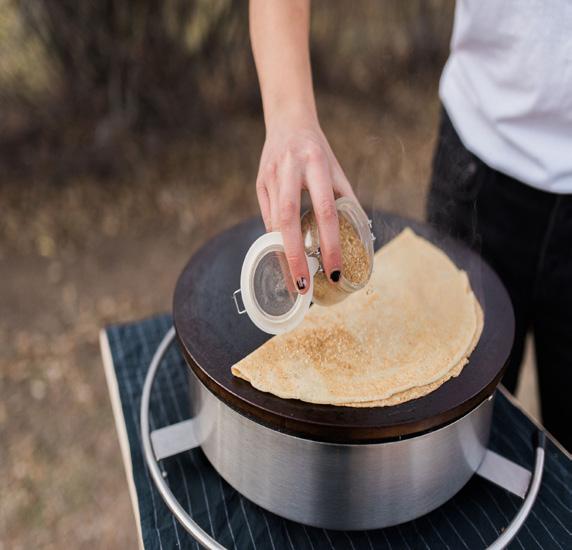

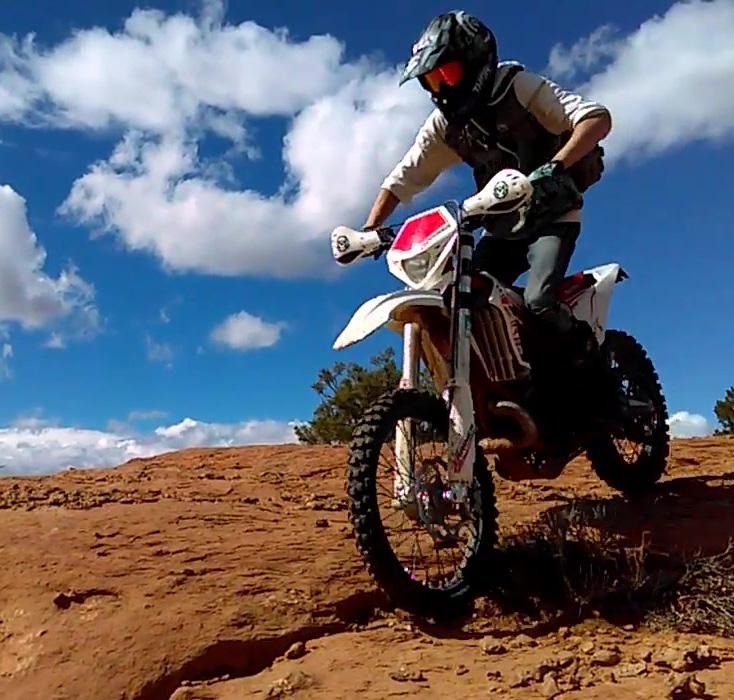
ROCKYTRAX @rockytrax Explore trails new and old with Andy as he shares his love of the outdoors through the lens of his business, which also doubles as a pretty entertaining hobby. Travel with him across western Colorado and eastern Utah through rad selfies and trail updates.
THE GEAR JUNCTION @thegearjct
This account takes us through adventures on the Western Slope. From kayaking pictures to the latest biking trail conquered, The Gear Junction curates their account for anyone excited about the outdoors.
BIG HEART BIG HANDS @bigheartbighands
Big Heart Big Hands believes backcountry safety starts off the mountain. This nonprofit based in the Vail Valley funds mountain safety awareness, mountain rescue air efforts, outreach and trauma support.
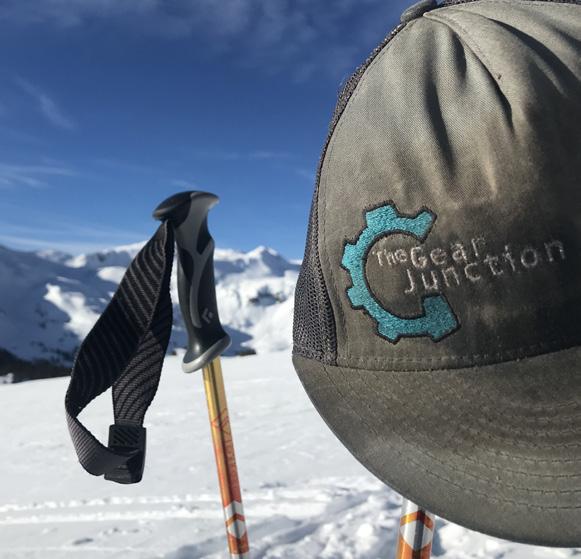
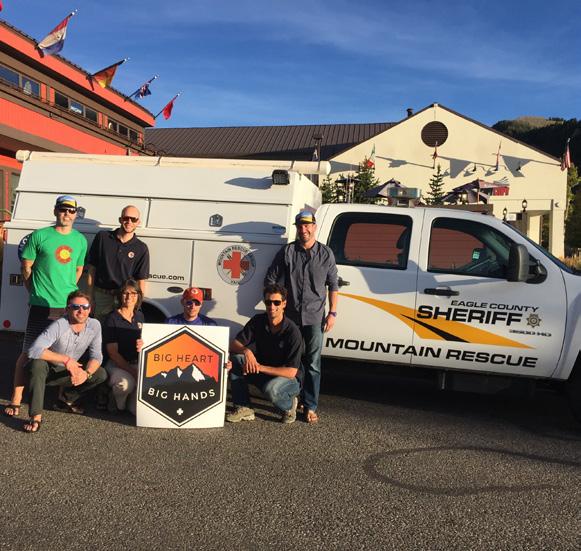
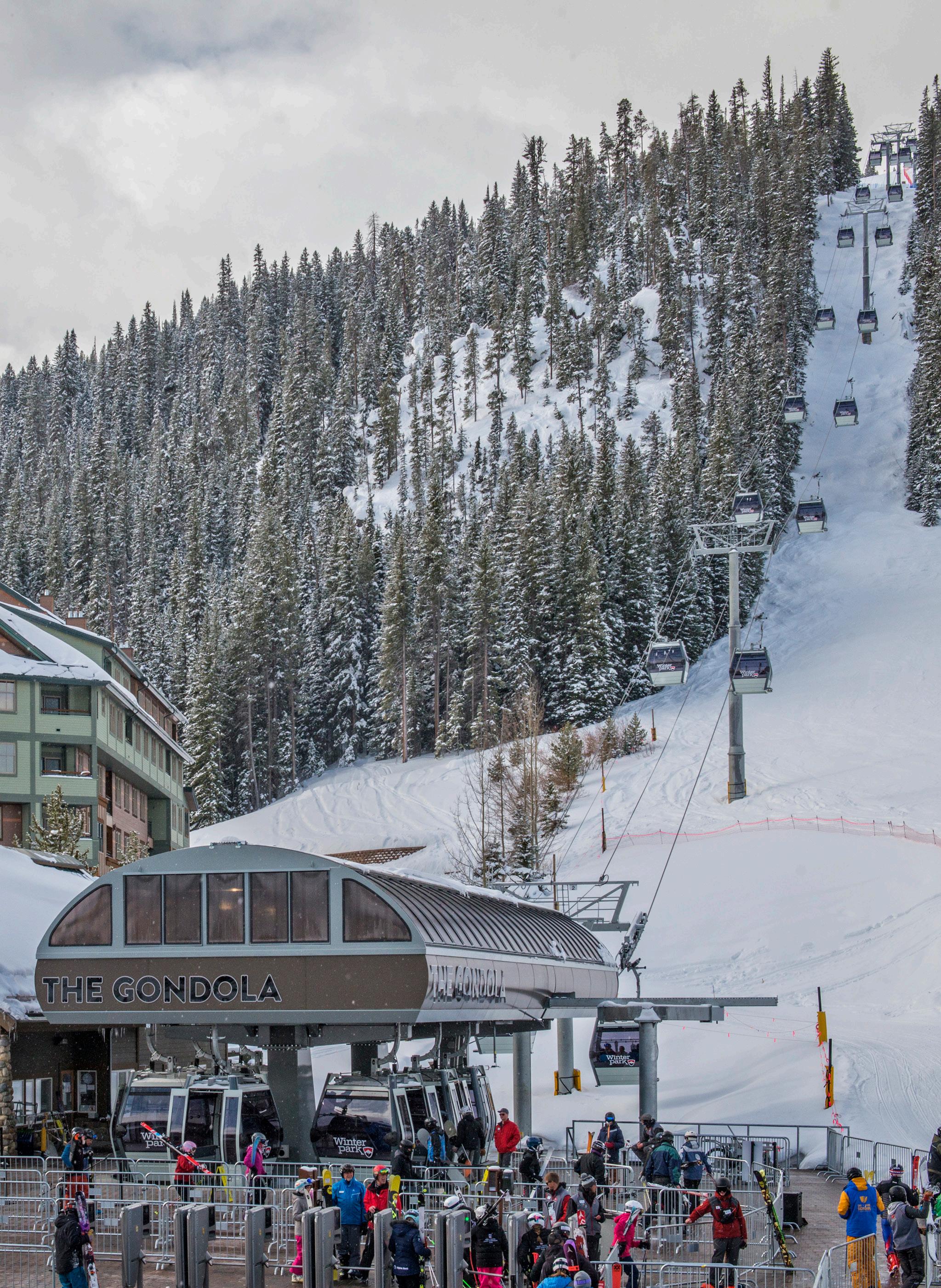
CALLING GRAND JUNCTION HOME FOR NEARLY 50 YEARS
LEITNER POMA OF AMERICA
Words by Kristen Lummis
If you’ve ridden chairlifts in North America during the past half-century, chances are many of these lifts had their origin in Grand Junction.
Since the early 1980s, Leitner-Poma of America, then known simply as Poma, has been headquartered in Western Colorado.
“When Poma was looking to expand in North America in 1980, the Grand Junction airport was a ski industry hub with flights coming in and buses going out to many of the Colorado resorts,” explains Daren Cole, president of Leitner-Poma.
“Easy access to Interstate 70 and the railroad, along with the climate, were also determining factors,” he says, adding that until 2007 when Leitner-Poma moved to its current facility, much of the manufacturing was done outdoors.
Rick Spear, who preceded Cole as LeitnerPoma president and has worked for the company since 1978, agrees that the city’s central location, between numerous Colorado and Utah ski resorts, was important, as was a proposal at that time to build a gondola system in nearby Parachute to access Exxon’s oil shale work site.
And while Exxon’s plan never came to fruition, the concept of using ropeways to move people to and from work has growing resonance for Leitner-Poma today.
WE MOVE PEOPLE
The banner at the top of the Leitner-Poma website boldly proclaims, “We Move People.” And move people, they do.
Leitner-Poma of America is within Italy’s High Technologies Industry Group (HTI) and is a sister company to Leitner A.G. in Italy and Poma S.A. in France. Together, these three companies transport approximately 8,000,000 people per hour, worldwide.
In North America, most of these people are transported on ski area chairlifts, gondolas and trams, with forms of urban transportation as a small but growing business component.
On the transport side, Leitner-Poma installed and operates the Roosevelt Island Tramway in New York City and an automated people mover at Miami International Airport.
And while contracts have yet to be awarded, there are at least 12 North American cities proposing urban ropeway systems. Among these are Albany, New York and Vancouver, British Columbia, according to Peter Landsman, the publisher of LiftBlog.com.
“Urban transportation is becoming a huge focus for Leitner-Poma in the United States,” says Cole, explaining that the cost of an urban gondola is a small fraction of the cost of adding buses, bridges or subways to a city.
Energy savings is another important component. “50 buses use 50 motors. With a ropeway, one motor is all they need,” says Cole.
Still, ski resort chairlifts remain essential to the company’s bottom line, with Leitner-Poma building an average of six to 10 new lifts each year and providing service on existing lifts from Grand Junction and three additional North American offices.
NO TWO LIFTS ARE ALIKE
In 2007, Leitner-Poma built a 90,000-squarefoot facility on 15 acres near the Grand Junction Regional Airport. The move, with assistance from the Grand Junction Economic Partnership, resulted in an increase in employees and indoor manufacturing capacity.
Currently, Leitner-Poma has 201 North American employees, with 159 in Grand Junction, the majority of whom are engineers
and skilled tradespeople involved in design and manufacturing.
A challenge for these employees, and one that keeps their jobs endlessly interesting, is that every new lift starts from scratch.
“No two lifts in the world are exactly the same,” explains Scott Bierman, who works in business development. “Every lift is built on unique topography and dependent upon the layout of the resort. None of this is ever the same,” he says, adding that building a lift or ropeway is like putting together a giant puzzle.
For a new lift, the process begins with surveying and engineering. Leitner-Poma
engineers — civil, electrical and mechanical — design everything from towers and foundations, to lift stations, terminals and bull wheels, along with the electrical brains that control lift operations.
While some components come from Europe — notably Swiss rope and Italian grips and chairs — 80 percent of each lift is designed and manufactured in Grand Junction.
“This is what sets us apart,” says Cole, noting that most of what is built in Colorado is handcrafted from raw steel by skilled machinists and welders.
LiftBlog’s Landsman agrees. “LeitnerPoma creates a customized product that meets the needs of North American ski areas of all different sizes. Whereas a Doppelmayr lift in North America is exactly what you’d see in Austria, Leitner-Poma’s terminals and towers

“We are very fortunate to call Grand Junction and the Western Slope home. The location is a key factor, but more so the community support and local work force are an integral part of our success.” — Daren Cole, president of Leitner-Poma.
are completely specific to, and designed for, the North American market.”
The flexibility to provide each resort with exactly the lift they want has garnered LeitnerPoma with tremendous loyalty, especially in Colorado where 100 percent of the operating chairlifts at Aspen Snowmass, Breckenridge, Crested Butte and Powderhorn are from the Leitner-Poma family.
With two Leitner-Poma lifts on order for 2020, Arapahoe Basin will join the club.
AN EXPANDING FAMILY OF COMPANIES
In 2016, Leitner-Poma of America acquired Skytrac, a fixed-grip chairlift manufacturer. Fixed-grip lifts operate at a constant speed, rather than slowing down for loading and unloading like high-speed detachable lifts.
Skytrac remains based in Salt Lake City and serves an important niche company as ski resorts replace aging infrastructure.
According to Michael Lane with the National Ski Areas Association, 80 percent of fixed-grip lifts in North America have been installed since 1970. And while resorts are diligent in repairing and upgrading existing chairlift stock, at some point, replacement becomes the most viable option.
In addition to Leitner-Poma, HTI’s investment in Grand Junction includes a North American office for Leitwind, a gearless wind turbine manufacturer, along with sales and service offices for Prinoth and Demaclenko.
Snow groomer manufacturer Prinoth has had a consistent, lengthy sales and service presence in Grand Junction, while Demaclenko, which produces snowmaking equipment, is just getting established in North America under the leadership of Rick Spear.
LOCAL IMPACT
In 2017, the overall revenue for HTI Group topped 1 billion Euros, or about 1.1 billion U.S. dollars, with Leitner-Poma of America representing over 50 million dollars in annual sales.
The economic impact in the Grand Valley is crucial, given the company’s size and manufacturing capability.
“I can’t think of anyone else in town who manufactures products on this scale,” says Sarah Lanci, assistant professor of mechanical engineering at Colorado Mesa University. “The equipment necessary to build and install chairlifts is huge. Helicopters are needed!”
Each fall, Lanci takes her students to tour Leitner-Poma’s facilities.
In addition to showing students specific components of the manufacturing process, Lanci believes the tours underscore the relevance between their classes and an engineering career.
“Visiting Leitner-Poma gives our students an idea of what they can pursue and aspire to in the future,” explains Lanci. “It adds relevance to our course work and inspires them. CMU is fortunate to have Leitner-Poma here.”
As for Cole, he fully concurs.
“We are very fortunate to call Grand Junction and the Western Slope home. The location is a key factor, but more so the community support and local work force are an integral part of our success,” he says. “We are proud to be a part of this community.” :

Cooking in the backyard to the backwoods in seconds.
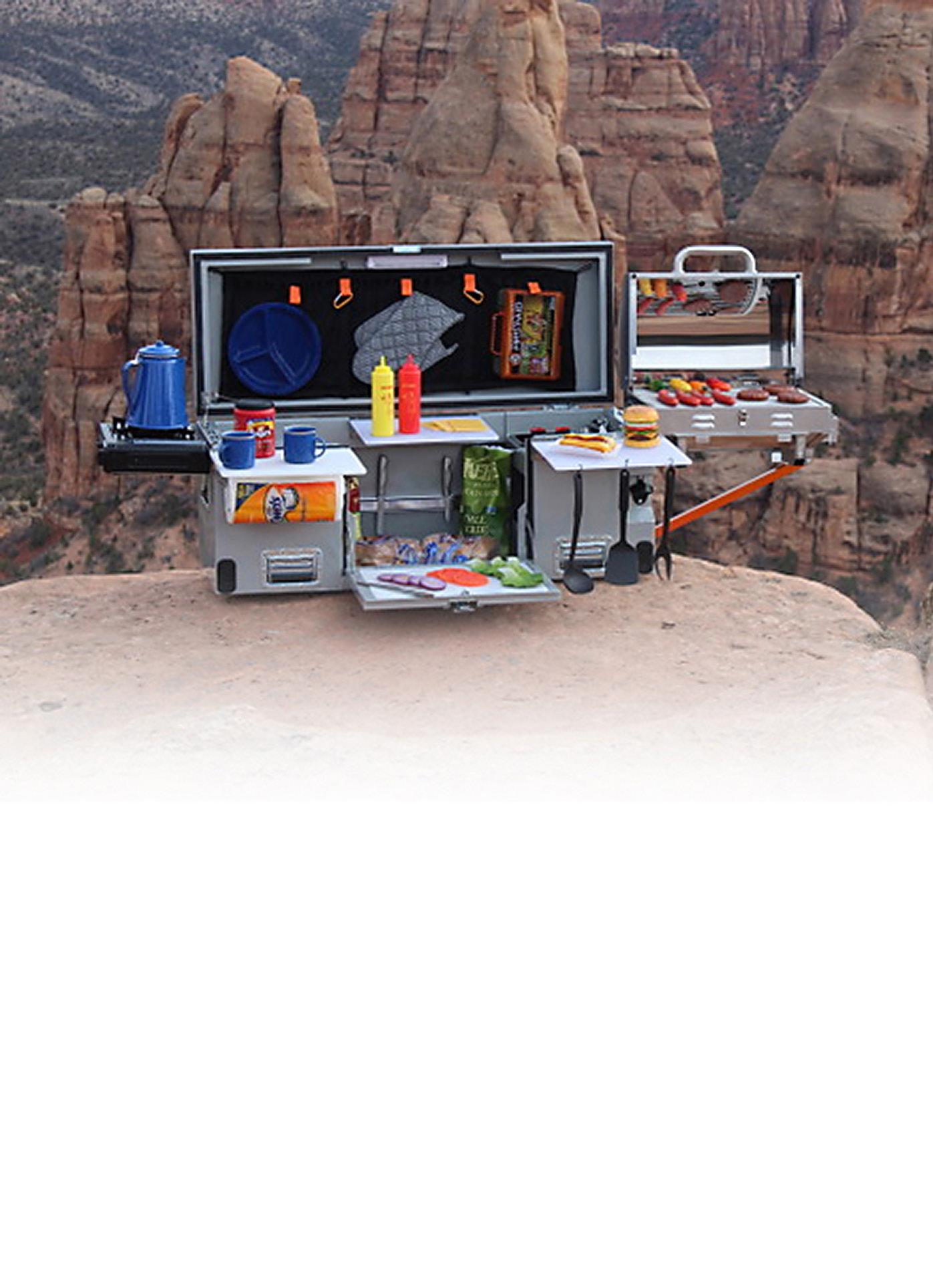
Use Code SPOKEBLOSSOM for 15% off your next order

COLORADO HEMP SOLUTIONS
2020 FARMERS SUMMIT
Words by Hannah Odneal | Photos courtesy of Colorado Hemp Solutions
While the overzealous and inexperienced speed in and fail fast, Tanner Willis & Wacey Clarke continue to lead a group of old school, Western Slope farmers into “The Green Rush” of industrial hemp farming at a sensible and sustainable pace.
Willis and Clarke partnered in exploration of the hemp industry after they had each seen CBD improve quality of life for people and pets they cared about. They founded Colorado Hemp Solutions in 2016. Knowing that the purest extracts provide the maximum health benefit, they naturally agreed that quality control from seed to salve had to be their company’s guiding principle.
With Willis’s cannabis industry expertise in growing, breeding and product development and Clarke’s agribusiness and farming expertise, they had a hard time finding an “industrial hemp consultant” with a knowledge base exceeding their own.
“That’s where the ‘solutions’ part of our name came from. We had to be, and find, our own solutions. It’s been a constant trial and error,” Willis says. “As the years went on, we grew into this nice, big network of farmers and breeders who can talk freely amongst each other, and we have a lot of things happening now that we just dreamed about in year one.”
Seeing the enormous potential for success, they started looking for the right partners to grow with — people already accustomed to and equipped for a farming lifestyle, who know their land and weather patterns like the back of their hand, and still keep meticulous farm records; people who are adventurous enough to find (and share) their own solutions when necessary. Many of their partners are fourth and fifth generation family farms. Collectively, they met their 2019 harvest goals in terms of volume, but the list of challenges to overcome in future seasons is long. Willis and Clarke are in constant communication with the other farmers throughout the year, and, in the winter months, they gather them all to reflect on the previous season and plan for the next. Clarke opened the 2020 Colorado Hemp Solutions Farmers Summit in January saying, “We’ve developed relationships with people that give us a clear path to having a place in the hemp industry, for as long as there is a hemp industry. I know
“I know it’s hard for farmers to tell everybody their super secrets, but if we all understand that we can spend just as much time talking about our failures as we can our successes, then maybe we can have a humble attitude and come together to compare specific notes.” — Wacey Clarke
it’s hard for farmers to tell everybody their super secrets, but if we all understand that we can spend just as much time talking about our failures as we can our successes, then maybe we can have a humble attitude and come together to compare specific notes.”
Many specific notes were compared, indeed — first, on how to best battle their most obvious adversaries (pollination and THC). Next, how each farmer’s prior experience, independent
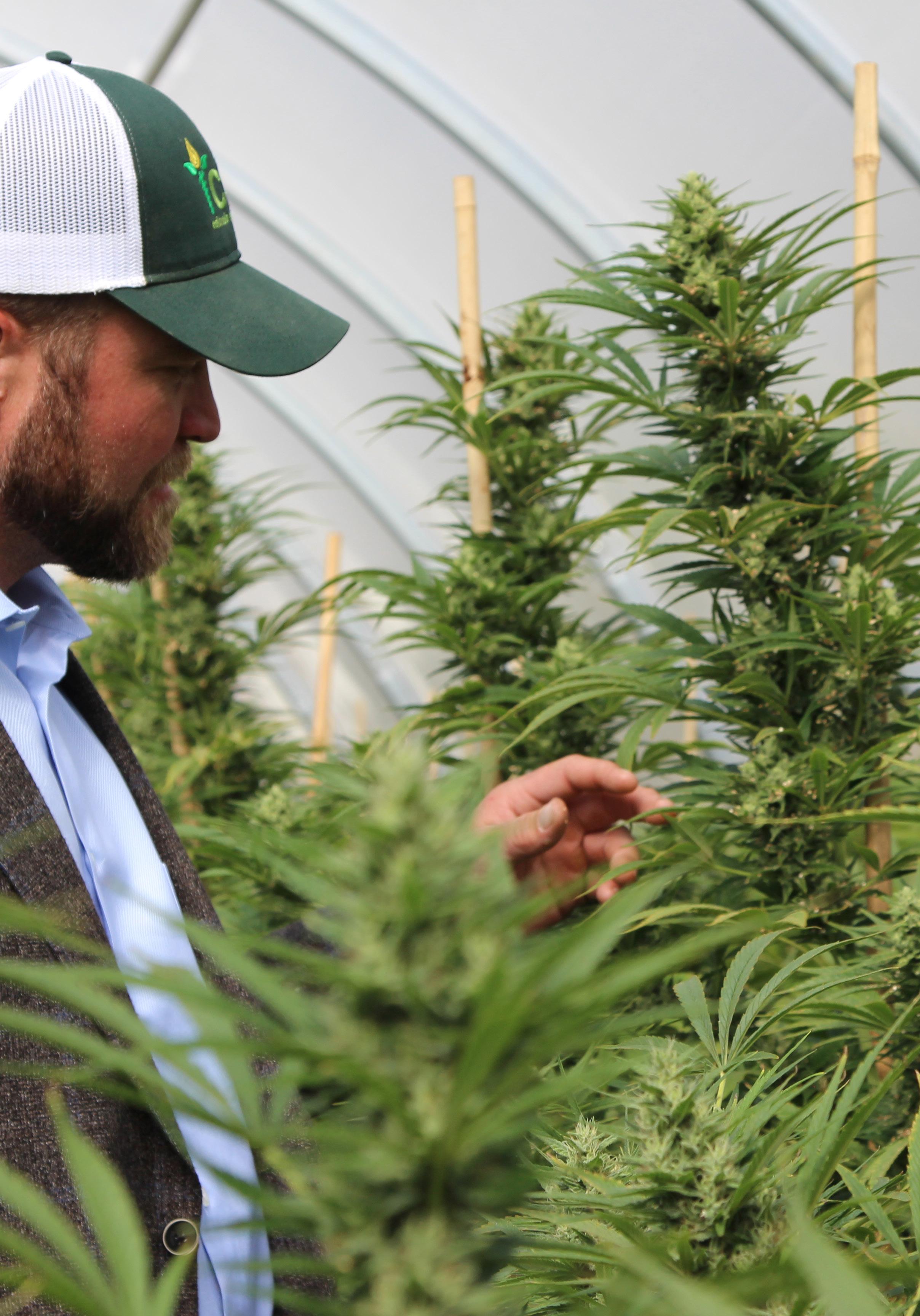
research and advice from CHS shaped their method, and the results. Variables in things like plant genetics, soil preparation, field layout, planting method, weed and pest management, nutrient delivery and use of heavy equipment occurred in many different combinations across plots spread out over the Grand Valley and eastern Utah.
“Genetics is the name of the game. We’re not gonna make a racehorse out of a mule,” jokes Brian Gold of Pinae Greenhouses, Inc. in Ogden, Utah. “The tomato and corn guys are getting it figured out, but they’ve got 50 years of breeding there.” Gold, who breeds plants for Colorado Hemp Solutions, emphasized more than once that the nurture of the plant is equally, if not more important, even with strains well-suited to the soil and climate. “Everybody thinks it’s a weed, but it’s tricky to grow! You have to be a good farmer.”
The data collected and shared between the 26 partner farms will be analyzed and organized
into a master schedule for the 2020 season. Timing, in various stages of the process, is crucial to keeping product compliant with regulations, and therefore valuable. The data will also guide wise investments in equipment, infrastructure, nutrients and labor.
Often less predictable, and more nervewracking, than the wild fluctuations in the Western Slope’s weather are the economic, regulatory and political climates surrounding this controversial industry. Clarke predicts hemp is still a decade away from trading on a commodity futures exchange, and the federal government hasn’t been clear about the “what” or the “when” in terms of updated regulations.
“In the meantime, it’s hard to rationalize high input farming when the market price is unclear. We’re not looking for giant expansion, just better execution,” Clarke said to the group.
The overall tone at the Farmers Summit was one of cautious optimism, but ultimately, trust in the leadership. “We’ve known Wacey since he was a kid. He was on football and wrestling teams with my kids and my nephews,” says Joe Bernal. “So, the groundwork is already laid to be a part of a community. The trust factor is there and the latitude to be frank and open is also there, which makes it comfortable.” Bernal attended the summit with his son and nephew, representing the fourth and fifth generations of Bernal Farms in Loma, Colorado. This was their first year growing hemp and they dedicated 40 of their family’s 950 acres to it.
“We don’t use traditional methods for row crops. With any crop you have to be able to evolve and constantly be looking for new ways to improve. Hemp is just another avenue for us to learn and grow,” says Bryce Atchley, representing the fifth generation of Atchley Farms in Delta. “We’re stepping out of our shell a bit here. Farmers don’t usually share their secrets. I mean, you don’t want to cut your own throat. But Wacey has a plan, and we believe in Wacey. If everybody can work together, we can get more accomplished. I’m sitting in a room full of successful growers, and it’s good to bounce these ideas off of each other.” :

Tanner Willis, Founding Partner of Colorado Hemp Solutions Wacey Clarke, Founding Partner of Colorado Hemp Solutions

GET OUT THERE!
IT’S COLORADO ... THERE’S ALWAYS SOMETHING GOING ON
MARCH
Downtown Restaurant Week
March 6-15 Grand Junction, CO
Whether you’re feeling like breakfast, lunch, dinner, a drink or have a case of the late-night cravings, many restaurants will be participating this year to bring you the best culinary taste of Grand Junction when you need it the most. Get your passport stamped at every eatery you visit, and you might qualify to win a prize at the end of the week! downtowngj.org/restaurant-week TEDx Grand Junction
Grand Junction, CO March 7
Listen to the visionaries of the community give insightful and engaging lectures about thoughtprovoking topics. The Avalon Theatre will host 16 sessions starting at 9 a.m. tedxgj.com
Ullr Nights
Snowmass Village, CO March 13
Honor the Norse God of Snow in a night of winter festivities. From snowshoe tours to sledding to snowbiking, Elk Camp hosts a true wintertime extravaganza. The wonderland opens at 5 p.m. and runs until 9 p.m. Reservations are recommended. gosnowmass.com
The Brewery Comedy Tour
Grand Junction, CO March 12
Have a laugh at Edgewater Brewery as over a dozen comics from New York and Los Angeles stop by and perform. These aren’t your run-of-the-mill jokesters from down the street — these



YOU ARE COLORADO
So are we!
You’re proud to call Colorado home. So are we. Since 1973, we’ve been giving back to the communities where we live, work and play across our great state, and we’re here to stay. If you are looking for an independent, locally managed community bank, where the employees are also the owners, we would like to be your bank. We’re Alpine Bank.
comics have performed at festivals and TV! The jokes start at 7 p.m. kannahcreekbrewingco.com
ArtWalk on Broadway
Eagle, CO March 13
Stop by Eagle and enjoy the businesses open for the monthly Art Walk! Live music and local artists will be hosted for your enjoyment. Shops will have sales, so make sure to snag a deal while you’re there! The walk starts at 5 p.m. eagleoutside.com
Montrose Farmers Market
Montrose, CO March 14
The Montrose Farmers Market is one of the oldest on the Western Slope. It’s a year-round market that just never stops giving. The locally grown products cycle through the year, so there must be something for everybody. All Montrose Farmers Markets run from 10 a.m. to 1 p.m. montrosefarmersmarket.com
Pepper Entertainment Presents: KANSAS
Grand Junction, CO March 15
Revel in nostalgia as KANSAS comes to town. The legendary band performs music that has propelled them through decades of dominance on the Billboard charts. As part of their anniversary tour, KANSAS is sure to rock the Western Slope. Doors open at 6 p.m. avalontheatregj.com
Artists of Crested Butte Art Walk
Crested Butte, CO March 20
Take a stroll and see what the artists of Crested Butte have to offer! Visit the 11 galleries and get inspired! The event is from 5 p.m. to 8 p.m. artistsofcrestedbutte.org/events/ art-walk
Vail, CO March 28
Ski for a cause as you enjoy live music and a community of over 3,000 strong that has come together to fight cancer on the slopes. Absolutely all the Pink Vail donations and registration fees directly benefit those in the Shaw Cancer Center. You don’t even have to ski to participate! pinkvail.com
Western Slope Beer Fest
Grand Junction, CO March 28
Sample craft beer from breweries that pepper the Western Slope. It’s the 8th annual festival and this one is surely not about to disappoint. A portion of all proceeds go to RiversEdge West, an organization dedicated to restoring the riparian lands throughout the western America. kannahcreekbrewingco.com
APRIL
Taste of Vail
Vail, CO April 1-4
Don’t be a fool. Start April off right at a high-quality food festival. The four-day event hosts over 5,000 people as they eat and drink their way through Vail’s finest restaurants and wineries. Enjoy the view or visit a seminar. Don’t forget the lamb sauce! The American Lamb Cook-Off also lets you sample lamb dishes from the kitchens of the finest chefs around. tasteofvail.com
Steamboat Springalicious Festival
Steamboat, CO April 1-12
Enjoy two whole weeks of free concerts, wacky events and welcoming spring! Watch homemade cardboard vehicles hurdle downhill or root for skiers to make it across the pond during the Splashdown Pond Skimming Championship. There’s something for everybody on the resort. Did we mention free concerts? steamboat.com/things-to-do/events/ springalicious
Flaushink Festival
Crested Butte, CO April 3, 5, 6 + 7
Flush out winter and welcome spring in the 51st year of the event. The oldest festival in Crested Butte includes a coronation ball, a polka and a parade. End the festivities with a ski to Flauschink Hill. An odd event if there ever was one but darn it it’s tradition! The festival starts at noon. gunnisoncrestedbutte.com
CMU Performing Arts Presents: The Wolves
Grand Junction, CO April 9-18
CMU’s experimental theatre puts on a show about the American Dream. It’s about persistence, drive and existential problems that plague us all day in and day out. It’s about girl’s indoor soccer? Catch it on consecutive weekends at 7:30 p.m. or a matinee at 2 p.m. coloradomesa.universitytickets. com
Spring Back to Vail
Vail, CO April 11-14
Be there as Vail blossoms back to life as spring approaches. Free concerts at Ford Park and late season specials are available. Don’t forget the World Pond Skimming Championship happens here too! Participants launch themselves from a jump and attempt to make it to the other side of the pond where glory lies. vail.com
Palisade International Honeybee Festival
Palisade, CO April 17-18
Advocate for the honeybee population by coming down to an international event. Vendors from around the community come together to celebrate
the little bees that make the town so fruitful. Before you ask, yes, there will be a spelling bee! palisadehoneybeefest.org
Durango Bluegrass Meltdown
Durango, CO April 17-19
Hang loose over a few nights of bluegrass music that will sure to make you do a jig. Share your music or listen to other musicians play in concert settings for all to hear. Multiple venues will be open to host all the talent that is sure to come. durango.com
5Point Adventure Film Festival
Carbondale, CO April 22-26
Spend five days at the 5Point Adventure Film Festival as you watch some impactful stories on the big screen that teach us about the boundaries that we have often pushed through to transform ourselves and the world around us. Come celebrate the outdoors and ourselves by hearing the stories the filmmakers will tell. 5pointfilm.org
Grand Junction Renaissance Faire
Grand Junction, CO April 25-26
Be transported to the medieval ages where knights dueled and magic was casted. This enchanted place will only be around for two days so be sure to stop by and see what treasures you find within. The lutes are tuned starting at 10 a.m. on both days. myfairsandfestivals.com/548601grand-junction-renaissance-fairegrand-junction-colorado-april-2020. html
Pints and Pools Craft Beer Festival
Pagosa Springs, CO April 25
Choose from 23 soaking pools at The Springs Resort and Spa. These hot springs will be your friends as you enjoy a full bar and beer tastings. Over 50 types of beers will be available alongside two food trucks to keep you fed. Beer tastings begin at 3 p.m. visitpagosasprings.com
MAY
Walk MS: Grand Junction 2020
Grand Junction, CO May 2
Walk for a good cause in Canyon View park. Register online for a one-mile or three-mile route in efforts to raise funds and awareness for Multiple Sclerosis and those affected by the condition. The walk begins at 9:30 a.m. secure.nationalmssociety.org
Grand Junction Rockestra
Grand Junction, CO May 2
Rock out at this unique musical experience that finds itself echoing the sound of Journey, Bon Jovi and Def Leppard. If that didn’t sell you, proceeds from the ticket sales goes to a scholarship fund for CMU’s Music Department. The music starts at 7:30 p.m. at Robinson Theatre. coloradomesa.edu/arts/music/ rockestra
Brews & Cruise Festival
Palisade, CO May 4
Make your way down “Brew Way” in downtown Palisade as you drink craft beer and enjoy local appetizers from participating restaurants. Live music is planned, and friends are to be made at this cute festival. If that’s not interesting enough for you, then perhaps buy a VIP tent and enjoy craft beer not available around these parts. palisadebrewscruise.com Wave (Light, Water & Sound) Festival
Breckenridge, CO May 28-May 31
Find wonder in this four-day festival in Blue River Plaza. This festival features art that center around the theme of light, water and sound. Experience what should be a mesmerizing show that will please your eyes and ears. Did we mention that it’s free? You can’t beat that. gobreck.com/event/wave-lightwater-sound
Mike the Headless Chicken Festival
Fruita, CO May 29-30
Celebrate the persistent life of Mike, the headless chicken. This festival sees everything from a 5k run to a car show. Enter a peep eating contest or play disc golf! Of course, you can’t miss the poultry show inside! Take home a t-shirt from one of the vendors and roam around while the live music plays. miketheheadlesschicken.org
Campout for the Cause
Buena Vista, CO May 29-May 31
Bonfire Entertainment presents the 12th annual Campout for the Cause at The Meadows in Buena Vista. Featuring headliners that include The California Honeydrops, along with yoga classes and community workshops. campoutforthecause.org
Grand Junction Off-Road & Downtown Music Festival
Grand Junction, CO May 29-31
Join Grand Junction for three days of free music across different stages. As the music plays, take a walk down the Grand Junction Horizon Sunrise Beer and Wine Garden that occupies four blocks of Main Street. As the festival enters its eighth year in existence, it is sure to be the most ambitious and enjoyable one yet. downtowngj.org/signature-events/ music-festival :



LORI + TROY RAPER
Interview by Naomi Allen | Photo courtesy of Lori + Troy Raper
Lori and Troy Raper are teachers at Palisade High School and experts at collaborating with their community. We took some time to learn more about the various ways they stay connected.
Spoke+Blossom: What are the activities you both do in the community?
Lori: We are both involved with Grand Valley Yoga Fest, whose proceeds go to suicide prevention and awareness in the valley. This is important to me because it brings together two of my passions. I have practiced and taught yoga for over 20 years. Suicide has affected me personally and I am passionate about finding ways to help those who are struggling. I am a ceramic artist with a studio in my home. I donate several pieces a year to causes that I am passionate about. I teach photography for Colorado Christian University’s online college, and love having students from around the world learn a skill that will stay with them for the rest of their lives.
Troy is the principal bass in the Grand Junction Symphony Orchestra. He is one of the founding organizers of the Grand Valley Honor Orchestra. Troy was the production manager and one of the bass players for the Crested Butte Music Festival for 20 years. Troy also coaches the E-sports team at Palisade High School.
S+B: In what way is collaboration most applicable to you?
Troy: As an orchestra teacher, I work with fellow music staff, sectional coaches and college teachers to improve musical output — an example would be the department-wide musical performance of The Music Man. For this musical to come together it was necessary for the choir teacher, theater teacher, band director and orchestra teacher — as well as the shop teacher — to collaborate to produce a successful performance. Lori: As an art teacher I am always collaborating on different levels. I encourage my students to work together on projects. I give feedback to each of them on their individual work. I also work with other teachers to help students be successful. I collaborate with members of the community to provide opportunities that my students would not normally get, like learning to raku fire with Terry Shepherd or participating in the Alturusa Art Fair or super rad art shows.
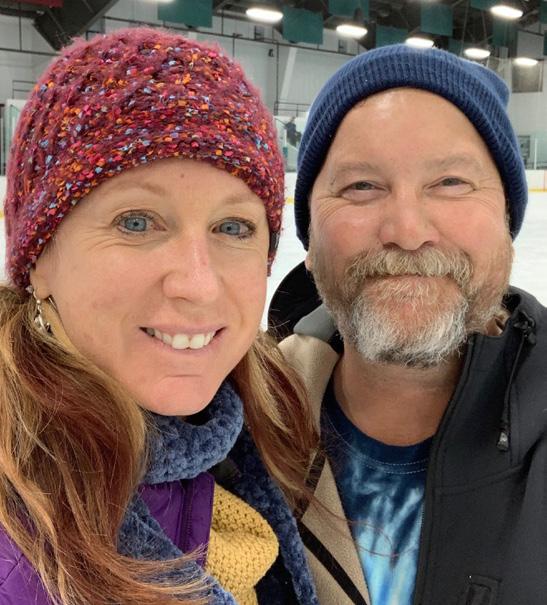
S+B: Lori, how is collaboration important in the art community, especially in the Grand Valley?
Lori: Art can be a very social endeavor and it is especially true in ceramics. Local artists gather to load and fire kilns and participate in workshops. My students paint Christmas windows. We participate in fundraisers and auctions to support important causes. For music they put on district music festivals, community theatre performances, honor groups and other performing groups. The arts are inherently collaborative endeavors.
S+B: Troy, how is collaboration important for a successful orchestra?
Troy: Collaboration in all music (except solo pieces) involves communicating in a variety of ways to reach a singular goal as an ensemble. Failure to collaborate would mean that there is no performance. You are collaborating by listening to the entire group in order to make adjustments to pitch, style and artistry. :




